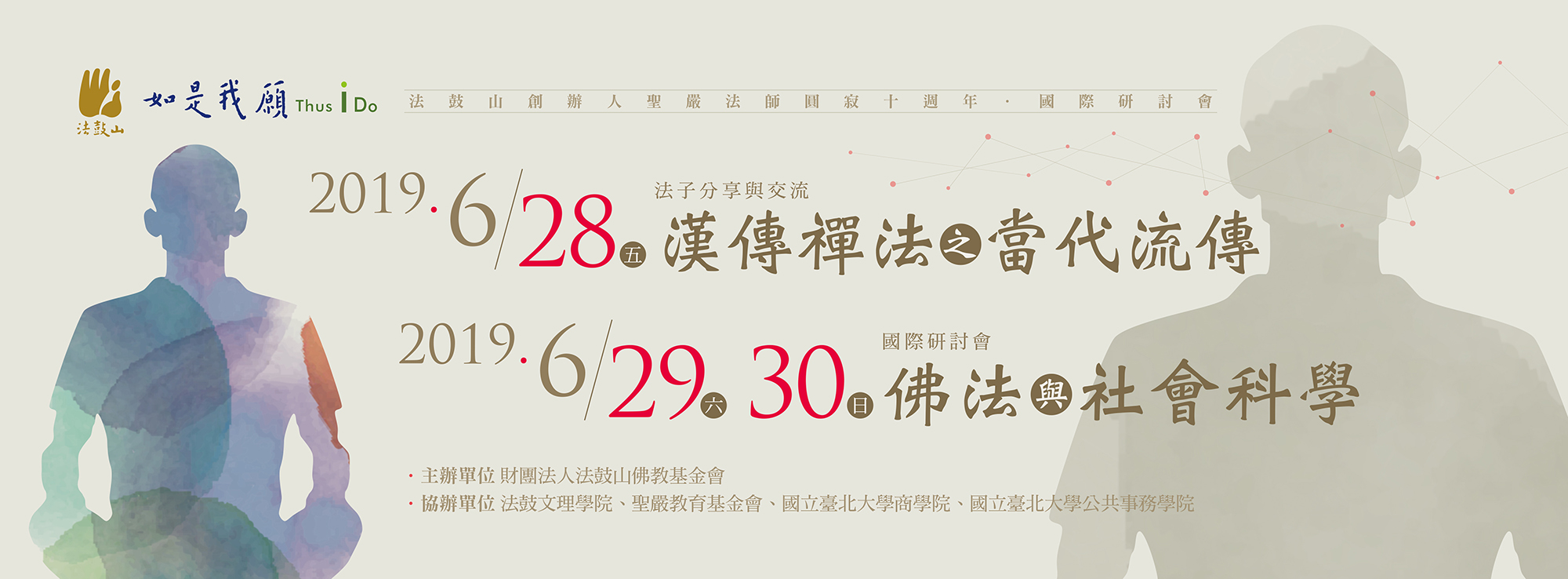禪修、治理、主體化
–現代性下的禪宗道場轉型與宗教師主體生成
釋常諗
隨著寺院規模擴大和建制化,法鼓山道場運作從1980年成立時傳統農禪生活,進入現代組織經營模式的佛教弘化志業組織,制度化各項寺院運作、教育與弘化工作。法鼓山教團成立世界佛教教育中心與全球弘禪道場,以現代經營管理與學院制的制度,經營寺院與培養禪佛教宗教師。在過去的近半世紀歷史中,法鼓山的禪法教學、修行模式、僧眾培育、弘化、組織治理模式等,均呈現顯著的轉型變遷,這樣的轉型,與佛教全球化下禪佛教回應現代性的挑戰息息相關。本文將分析和脈絡化法鼓山做為當代禪佛教復興運動現象之一,如何面對現代性下入世社會參與要求和組織工具理性的世俗化挑戰,所做的禪法教化與道場治理轉型,和宗教治理下的修行主體生成。本文將分析和脈絡化法鼓山做為當代禪佛教復興運動現象之一,如何面對現代性下入世社會參與要求和組織工具理性的世俗化挑戰,所做的道場治理轉型。接下來,將檢視台灣宗教研究中,討論宗教組織建制化對宗教實踐影響的理論侷限,並重新以當代理論家德勒茲(Gilles Deleuze)對主體化的討論,做為分析從農業社會轉型到工業社會的不同歷史模式下,法鼓山僧眾禪修主體生成的流變過程。德勒茲說明,主體化過程是由皺褶作用產生,所謂的「我」、或「與自我的關係」(the relation to oneself),是由域外之力的皺褶作用,而形成的特定歷史下的主體性(subjectivity)。Deleuze避免傅柯對主體分析的知識/權力與主體/抵抗架構所引起的層級化(stratified)(前者積主動加諸於被動後者)與對能動性的消極態度,而是更以知識存有(Knowledge -Being), 權力存有(Power-Being)和自我存有(Self-Being)三種維度同一平面(on the same plane)的力量作用,探討修行主體形成與時代歷史性之間的關係。
關鍵字:法鼓山、治理、宗教師、禪修、禪宗、當代佛教、主體化
Chan Buddhism, Governance, and Subjectivation
–The Formation of Monastic Subject in a Modern Chan Monastery
Changshen Shih
Dharma Drum Mountain (DDM) is an exemplary case of contemporary monastic reform: a sangha that transformed itself from traditional Chan monasticism to a modern Buddhist organization. DDM is a paradigm of a modern Chan Buddhist monastery—a spiritual space in which monastics practice outreach and social engagement in conjunction with their Chan cultivation. Modern Chan monastics differ from the solitary Chan ones of the past: Modern Chan monastics play official roles in an organization that itself has modern institutional structures of power; they actively participate in systematic Chan cultivation and outreach; and they apply Chan practice when carrying out the duties of their official positions, interacting with followers, and organizing activities.
Drawing from Gilles Deleuze’s notion of the three dimensions and threefold structure in the formation of subject, knowledge-being, power-being, and self-being, in this paper I offer a theoretical framework to contextualize the formation of modern monastic subject in relation to religious governance and modernity. Deleuze uses concepts such as “fold,” “outside,” and “subjectivation, ” to explain the process of subject formation. To Deleuze, the so-called “I” is “the relation to oneself,” that is, the subjectivity is folded from outside: “The most general formation of the relationship to oneself is the affect of self by self, or folded force. Subjectivation is created by folding.” Deleuze further uses the three dimensions and the threefold structure of Knowledge-Being, Power-Being, and Self-Being, to discuss the process of subject formation constituted by and situated in discourse and power of its particular historical conditions. Modern Chan teachers have been shaped and molded by the socioeconomic conditions and the modern “secular” demands of instrumental rationality and social outreach. Seeing the formation of monastic subject in DDM in becoming suggests that we reconsider the process of subjectivation of monastics in the Chan Buddhist revival in Taiwan in correspondence with the political, economical and social changes, a new religious governance that have been produced by modernity.
